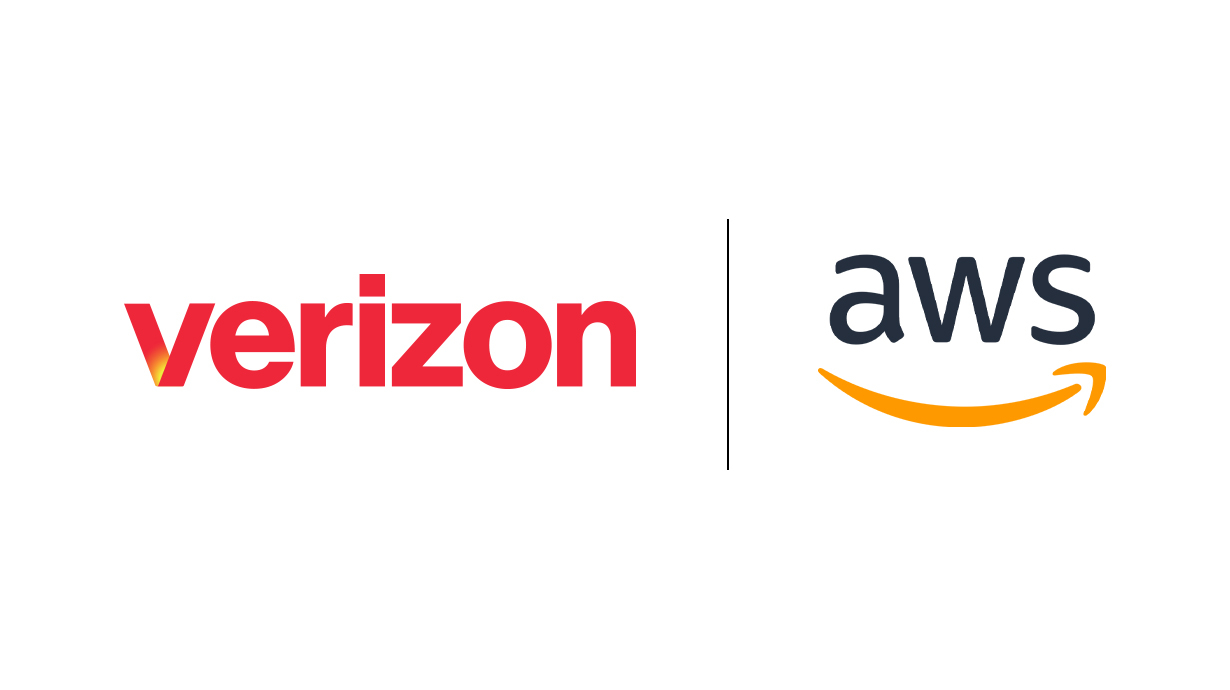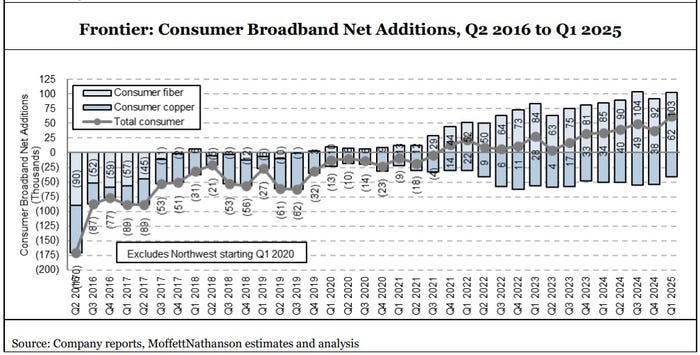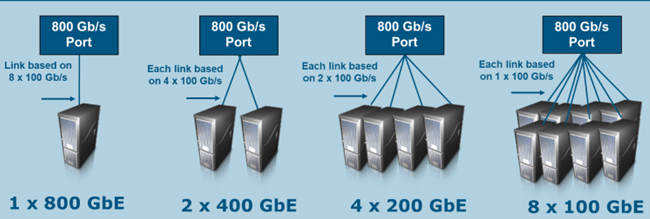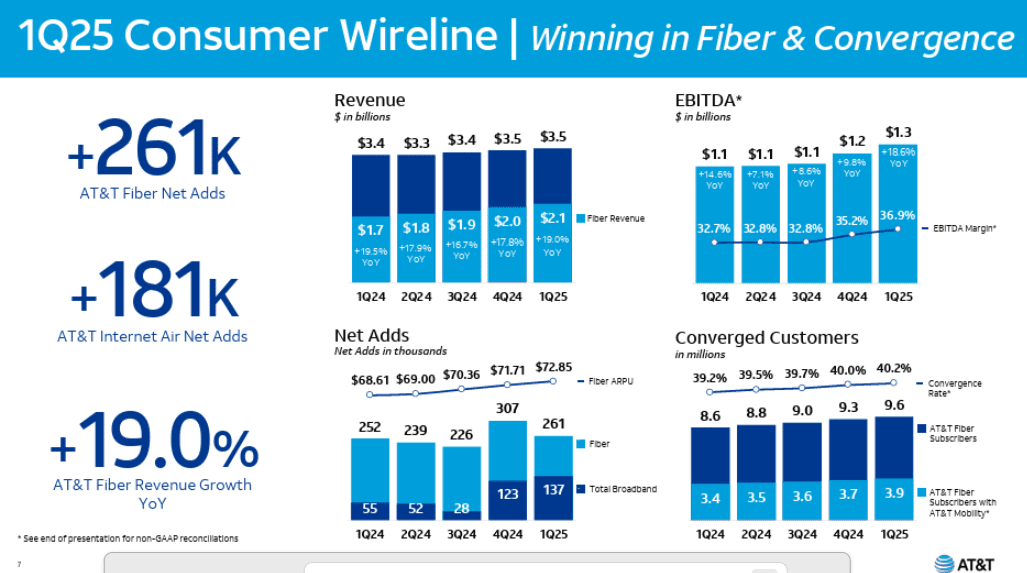fiber optics
How will fiber and equipment vendors meet the increased demand for fiber optics in 2026 due to AI data center buildouts?
Fiber optic vendors are employing a mix of manufacturing expansion, technological innovation in high-density and next-generation fibers, and strategic supply chain alignment to meet the anticipated surge in demand from AI and data centers in 2026. The demand is so high that at least one major fiber manufacturer, whose name was not explicitly disclosed in news reports, has already sold all its fiber inventory through 2026. Major fiber optic vendors by category are:
- Fiber & Cable Manufacturing: Corning, Prysmian Group, Sumitomo Electric, Fujikura, CommScope, Sterlite Technologies (STL), Yangtze Optical Fibre & Cable (YOFC)
- Optical Transport/Networking: Nokia, Ciena (gaining share), Cisco, Fujitsu, Huawei, Infinera (now part of Nokia)
- Optical Components/Transceivers: Coherent Corporation, Lumentum, Broadcom, Innolight, Accelink
Major focus areas of selected vendors:
- Corning: Leading in fiber cable quality and innovation
- Nokia & Ciena: Strong in optical transport and network solutions, gaining market share
- Cisco & Huawei: Significant players in optical transceivers, catching up to leaders
- CommScope, Clearfield, STL: Preparing for huge demand surges
John McGirr, SVP and general manager for Corning Optical Fiber & Cable, said, “The surge in hyperscale and AI network loads has significantly increased our expectations for fiber demand. Enterprise sales grew 58% year-over-year in Q3 2025, driven by continued strong adoption of Corning’s Gen AI products, largely due to AI network growth demands. The 72-GPU nodes, such as (Nvidia’s) Blackwell, require 16 times more fiber than traditional cloud switch racks. We see no signs of AI network growth slowing down especially as operators scale up (increase computational power by adding more resources within the existing backend AI network node) and scale out (increase the number of nodes to accommodate increasing demand) their networks.”
Rahul Puri, CEO of the Optical Networking Business at STL, said, “AI-focused data centers require significantly more fiber — about 36x more fiber than traditional CPU-based racks — to handle the massive data volumes and high-speed connectivity required by GPU clusters.” Puri predicts that cumulative hyperscale data capacity will increase by three times in the next few years alone. “The U.S. will need to add 213.3 million more fiber miles by 2029, more than doubling its current amount from 159.6 million fiber miles to 372.9 million miles. Our roadmap is shaped directly with the world’s leading cloud, AI and data center operators,”” Puri added.
CommScope’s VP of Technology John Chamberlain and VP of Hyperscale Cloud Erik Gronvall noted that the company has expanded its fiber manufacturing capacity in recent years to meet increased demand. “We are also innovating to reduce the amount of time it takes to deploy AI clusters,” said Chamberlain and Grovall.
………………………………………………………………………………………………………………………………………………………
Fiber Vendor Strategies:
Capacity Increase: Vendors like Corning and CommScope are investing in increasing their production capacity for fiber optic cables and the necessary preforms (raw material for fiber). This includes expanding existing facilities to help alleviate the current supply chain tightness and long lead times.
Technological Innovation in Fiber Design: To support the extreme bandwidth and low-latency needs of AI, vendors are focusing on advanced fiber technologies.
-
- Higher Fiber Counts: Companies are launching cables with extremely high fiber counts (e.g., 1,728+ strands) and higher density options to pack more capacity into existing infrastructure.
- Next-Generation Fibers: Research is ongoing in areas like hollow-core fiber (which uses air or a vacuum to transmit light faster and with less loss) and multicore fiber (multiple cores in one strand to increase capacity). These technologies, while not yet mainstream for 2026, are part of the long-term strategy.
- Bend-Insensitive Fiber: Innovations in bend-insensitive and ultra-high fiber count cables are improving durability and easing deployment in complex data center environments.
Pre-connectorized and Modular Solutions: To counter a persistent skilled labor shortage and speed up deployment, vendors are pushing factory-terminated, plug-and-play fiber systems and modular platforms (like Siemon’s LightStack). These solutions require less on-site expertise and reduce installation time.
Strategic Partnerships and Supply Chain Alignment: Vendors are forming strategic collaborations with hyperscalers and network operators (like the agreement between Corning and Lumen) to align manufacturing platforms with future demand and ensure supply. They are also working to optimize supply chains and, in some cases, regionalize manufacturing to reduce lead times.
Structured Cabling and Photonics: There is a renewed focus on structured cabling architectures, as recommended by some AI platform providers, to ensure predictable, low-latency performance and simpler long-term management. The industry is also exploring integrated photonics to address the power and thermal challenges of future systems.
Focus on AI-Specific Demands: Vendors recognize that AI data centers require up to five times more connectivity than traditional hyperscaler topologies and network architectures. Their strategies are specifically tailored to high-volume, intra-bay, inter-bay, and middle-mile fiber connections to link distributed data center clusters into a single, unified AI computing environment.

…………………………………………………………………………………………………………………………………………………………………………………………………………………………………………………………………
Ciena and Nokia:
- Ramping up Production: Ciena is accelerating the production of 800G ZR+ optical pluggables, with plans to ship a large volume in 2026 to major cloud providers who are currently testing the technology.
- New Architectures: The company is developing new interconnect solutions under the “Scaleacross” architecture designed to support growing AI workloads by significantly increasing capacity and density within the data center.
- Increased Forecasts: Driven by record orders from hyperscalers, Ciena has raised its revenue guidance for fiscal 2026 to a range of $5.7 billion to $6.1 billion, a significant increase that analysts tie directly to AI-driven demand.
- Strategic Positioning: Ciena emphasizes that the network will be the primary limiter of AI performance by 2026, positioning its high-speed fiber solutions as critical for moving massive amounts of data between compute nodes efficiently.
- Major U.S. Investment: Nokia announced a $4 billion investment in U.S. R&D and manufacturing capabilities for “AI-ready” network technologies, including optical and data center networking, to ensure robust domestic supply.
- Strategic Reorganization: Effective at the start of 2026, Nokia will reorganize into two primary segments, one of which is “Network Infrastructure” (including optical networks), which it sees as the center of the “AI supercycle.”
- Industry Collaboration: Nokia has deepened its commitment to the Open Compute Project (OCP) at the Platinum level, aiming to collaborate on open, interoperable AI networking innovations that optimize space, cost, and power efficiency with standards-driven technology.
- Advocacy for Network Modernization: Nokia’s research highlights that current networks are insufficient for future AI growth, advocating for substantial investment and cross-industry collaboration to modernize digital infrastructure to handle the uplink-heavy, distributed data flows generated by AI.
…………………………………………………………………………………………………………………………………………………………….
References:
https://www.fierce-network.com/broadband/major-fiber-vendors-strategize-huge-demand-ai-2026
https://www.fierce-network.com/premium/research/1410126?pk=FN-Research-Commscope-111925-listing
NTT to launch 25 Gps FTTH service in Tokyo starting March 2026
AI wireless and fiber optic network technologies; IMT 2030 “native AI” concept
AI infrastructure investments drive demand for Ciena’s products including 800G coherent optics
AT&T sets 1.6 Tbps long distance speed record on its white box based fiber optic network
China Telecom with ZTE demo single-wavelength 1.2T bps hollow-core fiber transmission system over 100T bps
Lumen and Ciena Transmit 1.2 Tbps Wavelength Service Across 3,050 Kilometers
Co-Packaged Optics to play an important role in data center switches
Coherent Optics: Synergistic for telecom, Data Center Interconnect (DCI) and inter-satellite Networks
Hyper Scale Mega Data Centers: Time is NOW for Fiber Optics to the Compute Server
Microsoft acquires Lumenisity – hollow core fiber high speed/low latency leader
China Mobile to deploy 400G QPSK by the end of 2023
Verizon to build new, long-haul, high-capacity fiber pathways to connect AWS data centers
Verizon Business has announced a new Verizon AI Connect deal with Amazon Web Services (AWS) to provide resilient high-capacity, low-latency network infrastructure essential for the next wave of AI innovation. As part of the deal, Verizon will build new, long-haul, high-capacity fiber pathways to connect AWS data center locations. This will enable AWS to continue to deliver and scale its secure, reliable, and high-performance cloud services for customers building and deploying advanced AI applications at scale.
These new fiber segments mark a significant commitment in Verizon’s network buildout, to enable the AI ecosystem to intelligently deliver the exponential data growth driven by generative AI. The Verizon AI Connect solution will provide AWS with resilient network paths that will enhance the performance and reliability of AI workloads underpinned by Verizon’s award-winning network. The Verizon-AWS collaboration also encompasses joint development of private mobile edge computing solutions that provide secure, dedicated connectivity for enterprise customers. These existing collaborations have delivered significant value across multiple industries, from manufacturing and healthcare to retail and entertainment, by combining Verizon’s powerful network infrastructure with AWS’s comprehensive cloud services.

“AI will be essential to the future of business and society, driving innovation that demands a network to match,” said Scott Lawrence, SVP and Chief Product Officer, Verizon Business. “This deal with Amazon demonstrates our continued commitment to meet the growing demands of AI workloads for the businesses and developers building our future.”
“The next wave of innovation will be driven by generative AI, which requires a combination of secure, scalable cloud infrastructure and flexible, high-performance networking,” said Prasad Kalyanaraman, vice president, AWS Infrastructure Services. “By working with Verizon, AWS will enable high-performance network connections that ensure customers across every industry can build and deliver compelling, secure, and reliable AI applications at scale. This collaboration builds on our long-standing commitment to provide customers with the most secure, powerful, and efficient cloud infrastructure available today.”
This initiative strengthens Verizon’s long-standing strategic relationship with AWS. The companies have already established several key engagements, including Verizon’s adoption of AWS as a preferred strategic public cloud provider for its digital transformation initiatives. Previous engagements have targeted use cases across sectors such as manufacturing, healthcare, retail and media, pairing Verizon’s network capabilities with AWS’s cloud stack. It should be noted, however, that AWS also uses other major carriers and dark fiber providers, such as Lumen Technologies, Zayo, AT&T, and others, to ensure a highly redundant and diverse global inter-data center network.
This deal highlights how telecommunications companies are becoming critical enablers of the AI-driven economy by investing in the foundational fiber optic infrastructure required for large-scale AI processing.
References:
https://www.verizon.com/about/news/verizon-business-and-aws-new-fiber-deal
Verizon transports 1.2 terabytes per second of data across a single wavelength
Verizon, AWS and Bloomberg media work on 4K video streaming over 5G with MEC
Amazon AWS and Verizon Business Expand 5G Collaboration with Private MEC Solution
Lumen deploys 400G on a routed optical network to meet AI & cloud bandwidth demands
Verizon’s commercial agreement with Eaton Fiber to accelerate fiber/mobile convergence
Verizon has announced a commercial fiber agreement with Eaton Fiber LLC [1.], an affiliate of Tillman Global Holdings, that will enable Verizon to sell fiber-based services outside its current wireline footprint and beyond the areas it will gain via its pending acquisition of Frontier Communications. It’s another important step to accelerate Verizon’s broadband and mobility convergence strategy, which has also been embraced by AT&T and T-MobileUS.
Note 1. “Eaton Fiber is a wholesale-only FTTP network provider powering ISPs with fast, frictionless access to future-ready fiber. Our open-access platform makes it easy for ISPs to expand across key U.S. markets—without building or managing the network. Our open-access platform makes it easy for ISPs to expand across key U.S. markets – without building or managing the network. You bring the service. We deliver the speed,” Eaton Fiber states on its website.
…………………………………………………………………………………………………………………………………………………………………………………………………………
Eaton Fiber will fund and build the network and take care of network maintenance and installation, while Verizon will be responsible for sales and marketing and end-user customer service. The agreement will expand Verizon’s premium broadband offering, complementing the company’s ongoing fiber builds and planned acquisition of Frontier. The agreement is expected to bring ultra-fast, high-capacity fiber service to homes and customers in markets outside of Verizon’s and Frontier’s current fiber-to-the-home footprint.

Image Credit: Eaton Fiber
“Our strategy is clear: lead the market in premium mobility and broadband convergence, and fiber is the foundation of that leadership,” said Sowmyanarayan Sampath, Executive Vice President for Verizon and CEO for Verizon Consumer. “This agreement allows us to rapidly enter new markets, accelerate deployment speed and ensure we maintain the necessary flexibility to capture growth opportunities across the country.”
“We are pleased to partner with a world-class provider in Verizon,” Sanjiv Ahuja, Founder, Chairman, and CEO of Tillman Global Holdings. “Marking a significant expansion of Tillman’s fiber deployments, this announcement underscores our shared commitment to expanding next-generation infrastructure nationwide.”
Missing from the press release: Verizon did not say where Eaton Fiber has built networks, where it intends to build, or how many homes and businesses Verizon eventually will be able to serve off of Eaton’s platform. Verizon also neglected to say when it will start to offer services via Eaton Fiber’s networks. It’s also not clear if Verizon is considered an anchor tenant or will represent one of multiple tenants that will sell services over Eaton Fiber’s network.
Tillman Fiber, builds and operates symmetrical gigabit-capable services over fiber-to-the-premises networks. The company was founded in 2021, and its backers include Tillman Global Holdings and Northleaf Capital Partners. In July, Tillman Fiber launched fiber networks serving parts of Northport, Kissimmee and Deltona and Hernando County in Florida. T-MobileUS is offering services on that network as part of a broader fiber Internet strategy that’s also underpinned by partnerships and acquisitions of Lumos, Metronet and US Internet.
Both Tillman Fiber and Eaton Fiber note on their respective websites that their fiber networks use an open access model that sells wholesale access to other Internet service providers (ISPs).
……………………………………………………………………………………………………………………………………………………………………………………
New Street Research David Barden remarked in a research note (registration required) that Eaton Fiber has not yet revealed its leadership. But given that Verizon referenced Frontier in today’s announcement, he wondered if Veronica Bloodworth, a former AT&T exec who has been serving as Frontier’s EVP and chief network officer since 2021, or Vishal Dixit, Frontier’s EVP of strategy and wholesale, “could be on a short list.” Barden also suggested that today’s announcement with Eaton Fiber is more about intent rather than specifics. “Given that this agreement was seen as worthy of a press release, especially within a month of Dan Schulman taking over the reins of the company, this release is also very likely about ambition as well,” Barden wrote.
………………………………………………………………………………………………………………………………………………………………………………………
Verizon’s new agreement with Eaton Fiber is proceeding as the company approaches the finalization of its $20 billion acquisition of Frontier Communications.
The integration of Frontier’s assets is expected to boost Verizon’s fiber network, increasing its reach to serve about 25 million premises throughout 31 states and Washington, D.C.. In addition to constructing 500,000 new FiOS locations this year, Verizon has set a strategic goal of achieving over 30 million fiber passings by 2028 and is exploring an eventual expansion to 35-40 million homes and businesses.
References:
https://www.verizon.com/about/news/verizon-expanding-broadband-new-strategic-fiber-agreement
https://www.lightreading.com/broadband/verizon-taps-into-eaton-fiber-to-broaden-fiber-reach
https://www.verizon.com/about/news/verizon-acquisition-starry
Verizon to buy Frontier Communications
UK’s CityFibre launches 5.5Gbit/s wholesale broadband service- 3 times faster than BT Openreach
CityFibre, the UK’s largest independent full fiber optic platform, has unveiled a new 5.5Gbit/s wholesale broadband internet service based on 10Gbit/s XGS-PON technology that has already been rolled out across 85% of the company’s network. CityFibre claims its new product is more than three times faster than the highest rate available service from its much larger rival, Openreach (the network access arm of BT). and available at a much lower wholesale cost, CityFibre’s 5.5Gb symmetrical product will enable partners to offer a range of Multi-Gig speed tiers to customers, improving margins whilst providing a valuable customer retention tool for the long term.
Highlights:
- CityFibre’s new 5500/5500Mbps service offers >3x faster downloads, >45x faster uploads than BT Openreach’s fastest full fibre service which is 1800/120Mbps and is delivered over its GPON network.
- CityFibre’s upgraded XGS-PON network provides numerous benefits over GPON technology, including network cost savings, reduced power consumption, improved performance, and enhanced efficiency.
- CityFibre’s launch of its new Multi-Gig products enables the UK to keep pace with countries including France, the Netherlands, New Zealand and the United States of America where consumers are already making the most of affordable Multi-Gig services.

Photo Credit: CityFibre
Greg Mesch, CEO of CityFibre, said: “The UK’s full fibre future is here, thanks to CityFibre’s powerful, 10Gb XGS-PON network. Our ISP partners are already connecting customers with speeds over 2Gb and exceeding expectations when it comes to quality and reliability, but our next generation of full fibre will set a new standard for what’s possible.
“CityFibre started out to challenge the incumbents and bring choice and competition to the UK market. This is another huge step-forward, giving ISPs more power and flexibility than ever before and bringing affordable Multi-Gig speeds and an unrivalled experience to millions of UK consumers.”
Even faster multi-gig services will be launched in 2026 the company promises.
CityFibre’s network now passes more than 4.3 million premises, which the company says means it is more than halfway along its journey towards its “rollout milestone” of 8 million premises. Actual service take-up, however, has reached just 518,000, an increase of around 181,000 customers on its previous total. During the year covered by the earnings statement, CityFibre announced a partnership with Sky that will see the UK’s second-largest broadband provider launch services on CityFibre’s network later this year.
References:
https://cityfibre.com/news/cityfibre-unveils-new-5-5gb-wholesale-product-its-fastest-ever
Nokia and CityFibre sign 10 year agreement to build 10Gb/second UK broadband network
Dell’Oro: Broadband access equipment sales to increase in 2025 led by XGS-PON deployments
Frontier Communications offers first network-wide symmetrical 5 Gig fiber internet service
Frontier Communications fiber growth accelerates in Q1 2025
AT&T grows fiber revenue 19%, 261K net fiber adds and 29.5M locations passed by its fiber optic network
Google Fiber planning 20 Gig symmetrical service via Nokia’s 25G-PON system
STELLAR Broadband offers 10 Gigabit Symmetrical Fiber Internet Access in Hudsonville, Michigan
Frontier Communications fiber growth accelerates in Q1 2025
Frontier Communications reported record fiber subscriber net adds in Q1-2025. However, the “fiber first” carrier had a loss of $0.26 per share, compared to break-even earnings per share a year ago. The telco posted revenues of $1.51 billion for the quarter ended March 2025, compared to year-ago revenues of $1.46 billion.
“We had the strongest start to a year yet, led by continued strength in our fiber business,” said Nick Jeffery, President and Chief Executive Officer of Frontier. “Consumers, business owners and technology companies are increasingly relying on fiber to power networks and connect to the digital economy – and that trend is shining through in our results. The team delivered 19% growth in fiber broadband customers and 24% growth in fiber broadband revenues this quarter, which taken together drove record first-quarter growth in both revenue and Adjusted EBITDA.”
Jeffery continued, “We also hit a milestone in the first quarter, growing our fiber network to reach more than 8 million passings. We started this turnaround journey with a goal of 10 million fiber passings and four years later, I’m proud to say that we’re nearly there. As we scale our network, we’re expanding access for millions of Americans and building a legacy that will continue to endure long after our planned combination with Verizon.”
First-Quarter 2025 Highlights
- Added 321,000 fiber passings to reach 8.1 million total locations passed with fiber
- Added 107,000 fiber broadband customers, resulting in fiber broadband customer growth of 19.3% year-over-year
- Consumer fiber broadband ARPU of $68.21 increased 4.7% year-over-year
- Revenue of $1.51 billion increased 3.4% year-over-year as growth in fiber-based products was partly offset by declines in copper-based products
- Operating income of $76 million and net loss of $64 million
- Adjusted EBITDA of $583 million increased 6.6% year-over-year driven by revenue growth and lower content expense, partially offset by higher customer acquisition costs1
- Cash capital expenditures of $757 million plus $16 million of vendor financing payments resulted in total cash capital investment of $773 million2
- Generated net cash from operations of $519 million
Frontier added 103,000 residential fiber broadband customers in Q1 2025, beating the 95,000 expected by MoffettNathanson (see graph below). Frontier’s residential fiber additions in the quarter were just shy of the record 104,000 it added in Q3-2024. The fiber facilities based carrier gained a record 59,000 net broadband customers in the period, which included losses of legacy copper subscribers.
Frontier built another 321,000 fiber passings in Q1-2025, pushing its total past the 8 million mark. Alongside subscriber growth, Frontier’s consumer fiber broadband average revenue per unit (ARPU) also climbed – to $68.21, up 4.7% versus the year-ago period.
Frontier said the “vast majority” of new fiber subs are now taking multi-gigabit speeds. A specific number wasn’t shared, but back in Q2 2024 more than 60% of new Frontier fiber customers took speeds of 1 Gbit/s or more.

CEO Jeffery said Frontier is sticking with its plan to build fiber to 1.3 million locations in 2025. The current pace puts Frontier on a path to reach its 10 million fiber passing goal around the third quarter of 2026, New Street Research analyst Jonathan Chaplin said in a research note.
Jeffery said Frontier’s “fiber build machine” is capable of going faster, but he stressed that the current pace gives the company the time it needs to also sell, service and support fiber broadband as it builds. “The whole company needs to be in balance. We want more customers and higher ARPU, and we’ve demonstrated that it’s doable,” Jeffery said.
He attributed ARPU growth to multiple factors, including customers taking higher-level speed tiers and subscribing to additional, premium services. Frontier estimates that more than 50% of new customers take some type of add-on, including whole-home Wi-Fi and YouTube TV.
Jeffery said Frontier is seeing good adoption of “Unbreakable Wi-Fi,” a $25 per month add-on that flips to 4G cellular backup (with 130 gigabytes of data per billing cycle) when the primary fiber connection is down. Those customers can also opt for a battery backup that provides up to four hours of backup power.
Frontier’s Q1 results come as it moves ahead with its proposed acquisition by Verizon which is currently expected to close by the first quarter of 2026. Jeffery would only say that the deal process is going smoothly at the state and federal levels.
“My job is now very much to deliver this asset in the best possible shape it can be to its future owner, Verizon,” he said. “I’m delighted to say that that’s really been evident in our first quarter results.”
References:
https://www.businesswire.com/news/home/20250429128668/en/Frontier-Reports-First-Quarter-2025-Results
Verizon to buy Frontier Communications
Frontier Communications recovering from unknown cyberattack!
Building out Frontier Communications fiber network via $1.05 B securitized debt offering
Frontier Communications fiber build-out boom continues: record number of fiber subscribers added in the 1st quarter of 2023
Frontier Communications offers first network-wide symmetrical 5 Gig fiber internet service
Fiber builds propels Frontier Communication’s record 4th Quarter; unveils Fiber Innovation Labs
AT&T to use Frontier’s fiber infrastructure for 4G/5G backhaul in 25 states
AT&T grows fiber revenue 19%, 261K net fiber adds and 29.5M locations passed by its fiber optic network
In the 1st quarter of 2025, AT&T’s fiber business showed strong performance, with fiber revenue growing by 19% year-over-year and 261,000 net fiber subscribers added. This growth helped drive overall wireline revenue and operating income, with fiber revenue contributing significantly to the 9.6% broadband revenue increase. AT&T’s fiber strategy is a key part of its broader plan for growth, including 5G wireless, and is expected to continue contributing to strong financial results. At the end of the 1Q2025, AT&T said that 29.5 million locations were passed with its fiber network. The company expects to surpass 30 million by midyear, months ahead of its original target. Consumer fiber broadband revenue was $2.1 billion in the quarter, up 19% year-over-year, as more customers upgraded to faster service tiers. Executives noted that more than 40% of AT&T Fiber households now also subscribe to AT&T wireless, part of a deliberate strategy to drive “converged” customer relationships.
AT&T continues to lead the Fiber-to-the-Home market, and has reportedly been in talks to acquire Lumen Technologies’ consumer fiber business in a deal valued at more than $5.5 billion, according to Bloomberg and Reuters
CFO Pascal Duroche on the 1Q2025 earnings call:
“We delivered 261,000 AT&T Fiber net adds, up from 252,000 in the first quarter of last year. This was driven by growth in our consumer locations served with fiber, which reached 23,800,000 at the end of 1Q and growing contribution of net adds in regions served with Giga Power Fiber. We love the return profile of fiber and the lift it provides our mobility business only makes investing in fiber more attractive. AT and T Internet Air net adds were 181,000 in the quarter, which is a significant improvement from a year ago, driven by broader availability across our distribution channels. Our combined success with these two services helped us deliver 137,000 total broadband net adds in the quarter.
This marks our seventh straight quarter of overall broadband subscriber growth and second consecutive quarter with more than 100,000 broadband net adds. We grew Consumer Wireline revenue by 5.1% versus the prior year. This was driven by fiber revenue growth of 19%, reflecting subscriber gains and solid fiber ARPU growth of 6.2%. Consumer wireline EBITDA grew 18.6% for the quarter. Our first quarter results benefited from vendor settlements that positively impacted our total wireline operating expenses by approximately $100,000,000 Roughly $55,000,000 of the impact was in Consumer Wireline with the rest in Business Wireline.”
AT&T is investing heavily in its fiber network which is reflected in the increase in its capital expenditures (CAPEX) which are expected to remain in the $22 billion range annually from 2025 through 2027.

AT&T logo on a building in Pasadena, California, U.S., January 24, 2018. REUTERS/Mario Anzuoni/File Photo Purchase Licensing Rights
………………………………………………………………………………………………………………………………………………………………………………………………………..
“Where we have fiber, we win,” said CEO John Stankey. “This dynamic continues to drive growth, shown by our increasing rate of convergence, customer penetration and significant wireless share gains within our fiber footprint.”
………………………………………………………………………………………………………………………………………………………………………………………………………….
References:
https://about.att.com/story/2025/1q-earnings.html
Analysts weigh in: AT&T in talks to buy Lumen’s consumer fiber unit – Bloomberg
AT&T sets 1.6 Tbps long distance speed record on its white box based fiber optic network
AT&T Highlights: 5G mid-band spectrum, AT&T Fiber, Gigapower joint venture with BlackRock/disaggregation traffic milestone
Corning to Build New Fiber Optic Plant in Phoenix, AZ for AT&T Fiber Network Expansion
AT&T CEO John Stankey: 30M or more locations could be passed by AT&T fiber (he said that in Sept. 2021)
AT&T and Verizon cut jobs another 6% last year; AI investments continue to increase
Evercore: T-Mobile’s fiber business to boost revenue and achieve 40% penetration rate after 2 years
T-Mobile’s fiber business could serve about 5 million U.S. customers and generate up to $5 billion in revenue during the next five years, according to financial analysts at Evercore. That call is the investment advisor firm’s first take at evaluating the maturation of T-Mobile’s fiber plans. It’s based on the assumption that T-Mobile will close its deal to acquire fiber operator Metronet, following the recent closure of another deal with EQT for fiber operator Lumos. Evercore’s projections do not assume that T-Mobile will make a play for another fiber operator like Lumen Technologies.
“Looking to 2030, we expect 14 million [fiber] passings … and 4.8 million subscribers,” the analysts wrote in a note to investors this week. “Assuming a $75 ARPU [average revenue per user] growing 4% year over year implies ~$5 billion of revenue in 2030. “While it hasn’t shared subscriber targets, [T-Mobile] management has expressed confidence that it would see higher long-term market penetration than typical [fiber] overbuilders (e.g., ~35%) benefitting from its national brand and advertising, digital and retail distribution, ability to take advantage of the waiting list it has for FWA [fixed wireless access] in markets where demand outstrips supply,” the Evercore analysts added.
Evercore assumes that T-Mobile Fiber (see plans below) will be able to capture 10% market share within six months of launch and 20% within a year. After two years, the analysts predict T-Mobile Fiber will command 40% penetration (meaning, 40% of the customers reached by its fiber connections will subscribe to those connections).
T-Mobile Fiber Plans:
- Fiber 500 (500 Mbps): Superfast performance for gaming, streaming, and more.
- Fiber 1 Gig (1000 Mbps): Blistering speeds for every device and user in your home.
- Fiber 2 Gig (2000 Mbps): Our fastest speeds and largest capacity for more devices and users.
 ……………………………………………………………………………………………………………………………………….
……………………………………………………………………………………………………………………………………….“For now, until there’s greater color from management, we’ve assumed T-Mobile will see 25% EBITDA [earnings before interest, taxes, depreciation and amortization] margins on its Fiber revenue. This could be conservative over time,” the Evercore analysts wrote. They predicted overall EBITDA from T-Mobile Fiber of around $340 million in 2026, growing to $1.24 billion in 2030. And that, they said, would equate to free cash flow of $270 million in 2026, growing to $1 billion by 2030.
“Pricing will evolve as T-Mobile acquires and operates Metronet and Lumos’ subscribers along with the competitive dynamics across the broadband market. T-Mobile has a clear history of being a disruptor, so it could be more aggressive on pricing than we expect, resulting in downside to our ARPU and revenue estimates,” the Evercore analysts warned. They noted that T-Mobile Fiber in some Colorado markets today costs $55 per month for 500 Mbit/s connections. That’s similar to local incumbents Lumen Technologies ($50 for 500 Mbit/s) and Comcast ($55 per month for 600 Mbit/s).

Convergence of mobile and fiber access will provide a tailwind for T-Mobile, potentially driving increased postpaid phone share and revenue. “Despite management’s tone around the benefits of convergence, we believe there will clearly be an opportunity to drive higher postpaid phone share across the growing number of households that ultimately end up taking T-Mobile fiber,” according to the Evercore analysts. They predicted that T-Mobile’s fiber operations would eventually help improve the operator’s postpaid smartphone net customer additions by up to 650,000 per year, and that it will drive the operator’s annual wireless service revenues up by $200 million to $350 million.
An important insight into T-Mobile’s convergence strategy emerged in the wake of its acquisition of Lumos. “New and existing customers will enjoy VIP treatment through Magenta Status, which includes exclusive benefits like discounts on food, gas, entertainment and top brands, plus freebies every Tuesday in the T-Life app. All with T-Mobile’s standard ‘no exploding bills’ pricing structure,” T-Mobile said of its new Lumos customers.
“One app. All the things,” T-Mobile proclaims of the T-Life app it launched roughly a year ago. The app is available to all T-Mobile smartphone customers – and now its new fiber customers.
“Get the latest exclusive perks from T-Mobile Tuesdays, and take advantage of all your Magenta Status benefits,” T-Mobile said of its T-Life app. “You can also pay your bill, add a line to your account, and track orders straight from the app. And you can manage your account, configure your T-Mobile Home Internet gateway, and more. If you need help with anything, customer care is available at the tap of a button.”
The analysts expect T-Mobile’s fixed wireless access business to continue gaining traction, potentially reaching 7% of the total broadband subscriber base by 2025.
Separately, Verizon is now Evercore’s top pick among wireless network operators and is its top value idea.
…………………………………………………………………………………………………………………………………………………………………………….
References:
https://www.lightreading.com/fttx/t-mobile-fiber-could-see-5m-customers-and-5b-in-revenue-by-2030
AT&T sets 1.6 Tbps long distance speed record on its white box based fiber optic network
AT&T claims it achieved a long distance world record top speed of 1.6Tb/s over a single wavelength across 296 km of its long haul fiber optic network (spanning Newark, New Jersey to Philadelphia, Pennsylvania). That is four times faster than its current top speed of 400Gb/s per wavelength!
The 1.6Tb/s wavelength carried two IEEE 802.3df-2024 standard-based 800 Gigabit Ethernet end-to-end circuits, an industry first. It is a full, uninterrupted data path utilizing a single light frequency across the entire fiber length between two endpoints. The single-carrier 1.6 Tb/s wavelength was transported alongside existing live customer traffic on 100Gb/s and 400Gb/s wavelengths.
Open-sourced white box switches were the network equipment used during the trial. The white boxes are designed using the Broadcom Jericho3 packet processor chip and can provide up to 18 x 800G network interface ports all within a 2RU platform. The (Israel based) DriveNets Network Cloud software-based solution is hardware-agnostic and runs open APIs on the white boxes to perform data and control plane functions, including routing at 800G. The use of white boxes and the disaggregation of the hardware and software control costs and facilitate faster innovation.
The two 800GbE signals from the white box were multiplexed to 1.6 Tb/s in Ciena’s WaveLogic 6 Extreme coherent optical transponder, which is the first coherent optical solution to use a 200Gbaud design and 3nm coherent DSP ASIC and to reach speeds up to 1.6 Tb/s on a single carrier. The WL6e technology reduces the space and power per transmitted bit by 50% compared to current 800G transponders. This trial is the first to demonstrate WL6e at 1.6Tb/s with standards compliant 800GbE clients.
In the Newark and Philadelphia offices, 800G DR8 pluggable transceivers from Coherent were installed in the white box router and WL6e transponder to create the cross-office connectivity between the packet and optical technologies. And 800GbE client signals, provided by Keysight’s AresOne-M 800GE testset, fed the white box through additional pairs of 800G DR8 pluggable client optics, allowing verification of end-to-end performance of the two 800GbE services from Newark to Philadelphia.
Quotes:
“Traffic on AT&T’s network continues to increase as consumers are using more connected devices,” said Mike Satterlee, vice president, Network Infrastructure and Services, AT&T. “We anticipate network traffic growth to double by 2028 and the technologies demonstrated in this trial will play a key role in AT&T’s continued efforts to keep up with increasing customer demand to send data, watch videos, and use streaming services.”
“This groundbreaking achievement with AT&T adds to a growing list of Ciena industry-firsts that push the boundaries of optical network speed and capacity,” said Dino DiPerna, senior vice president, Global Research and Development, Ciena. “Ciena’s WaveLogic 6 coherent optics will support AT&T’s next gen converged optical network and efforts to build a cloud-based and AI-ready network with greater scale, flexibility and efficiency.”

Verizon’s 1.6Tb/s on Metro Fiber Network:
AT&T’s announcement comes just a few months after arch-rival Verizon announced a 1.6 Tb/s milestone of its own. Verizon also, working with Ciena, achieved that peak speed on a single wavelength, but on its metro fiber (not long distance) network. Verizon is mainly looking to advance through M&A. Its proposed acquisition of Frontier Communications is still pending, with some Frontier shareholders insisting that the US$20 billion price tag undervalues the operator.
……………………………………………………………………………………………………………………………….
AT&T has spent the past six months demonstrating that it aims to build its way to fiber domination. It rolled out fiber to around 600,000 premises in the 4th quarter of last year, taking its total fiber footprint to 28.9 million locations; it is shooting for 50 million by the end of 2029.
References:
https://about.att.com/story/2025/data-transport.html
https://www.business.att.com/products/wavelength-services.html
https://www.telecoms.com/fibre/at-t-touts-1-6-tbps-fibre-speed-milestone-as-us-battle-continues
AT&T Highlights: 5G mid-band spectrum, AT&T Fiber, Gigapower joint venture with BlackRock/disaggregation traffic milestone
Nokia, Windstream Wholesale and Colt complete world’s first ultra-fast 800GbE optical and IP service trial
China Telecom with ZTE demo single-wavelength 1.2T bps hollow-core fiber transmission system over 100T bps
T-Mobile posts impressive wireless growth stats in 2Q-2024; fiber optic network acquisition binge to complement its FWA business
Bell Canada buying Ziply Fiber for C$7 billion; will become 3rd largest fiber ISP in U.S.
Bell Canada buying Ziply Fiber for C$7 billion; will become 3rd largest fiber ISP in U.S.
Bell Canada (owned by BCE) has entered into a definitive agreement to acquire Ziply Fiber in a deal with a transaction value of around C$7 billion (C$3.65 billion in cash plus the assumption of debt). The acquisition is expected to close in the second half of 2025, subject to certain customary closing conditions and the receipt of certain regulatory approvals. Following the deal closure, Ziply Fiber, a fiber Internet provider in the Pacific Northwest of the U.S, will operate as a separate business unit and will continue to be headquartered in Kirkland, Washington.
BCE said the acquisition enhances Bell’s growth profile and strategic position by giving it a foothold in the large, underpenetrated U.S. fiber market. The deal will increase its scale, diversify its operating footprint and unlock significant growth opportunities. This deal would make Bell Canada the third largest fiber internet services provider in North America, after AT&T and Verizon. It follows Verizon’s recent announcement that it’s acquiring Frontier Communications for $20 billion.
Currently, AT&T passes 28 million locations with fiber, and Verizon passes 17.8 million.

AT&T says it will pass 30 million locations by the end of 2025 and may ultimately choose to pass 45 million locations.
Verizon says it will pass 30 milli
on locations after the Frontier buyout closes.
When the Ziply buy-out is finalized, Bell Canada will have about 9 million fiber locations, combining its 7.7 million locations in Canada with Ziply’s 1.3 million in the U.S. Bell Canada said it has a goal of passing 12 million fiber locations in North America by 2028.
Lumen’s original target for its residential Quantum Fiber expansion was 12 million locations, but the company cut its target to between 8 million and 10 million. Lumen expects to exceed 500,000 new passings in 2024.
………………………………………………………………………………………………………………………………………………………………………………….
Ziply was founded in May 2020 when it purchased network assets from Frontier in the states of Washington, Oregon, Idaho and Montana. The company was founded by CEO Harold Zeitz and Steve Weed, who’s the executive chairman. Ziply’s current owners are Wave Division Capital and Searchlight Capital, which are selling to Bell Canada.
Zeitz told Fierce Network about two-thirds of Ziply’s broadband footprint is currently fiber, and it’s working to overbuild its remaining copper plant with fiber. “In addition to building in the ILEC footprint, we’re also building outside that footprint in adjacent markets,” said Zeitz. By “adjacent markets” he was referring to the many towns “adjacent” to Ziply markets where Lumen Technologies is the main broadband provider. Ziply has a goal to build fiber in about 80% of its footprint, but it may expand that. And under Bell’s ownership it plans to build 20% faster.
“We just want to deliver a refreshingly great experience to all the towns in our four-state area,” Zeitz said. “We think there’s tremendous opportunity organically. There are 50-60 million households that don’t have fiber. I think over time we’ll see more acquisitions,” he added.
…………………………………………………………………………………………………………………………………………………………………………………………………………………………………….
Analysts at AlixPartners said there are more than 400 small fiber providers in the U.S. that could be acquired by investors or larger fiber optic telcos. The firm conducted a survey in August of 60 executives at different fiber companies and 1,000 U.S. residents. According to the survey, 93% of respondents said consolidation is happening or will happen soon. “It’s clear based on the results that this is a buyer’s market—but sellers can use this knowledge to their advantage as well, the firm noted.
…………………………………………………………………………………………………………………………………………………………………………………………………………………………………….
References:
https://www.nasdaq.com/articles/bces-bell-canada-buy-ziply-fiber-around-c-7-bln-cash-debt-deal
Nokia, Windstream Wholesale and Colt complete world’s first ultra-fast 800GbE optical and IP service trial
Nokia, Windstream, and Colt Technology Services have completed an 800 Gigabit Ethernet (800 GbE) trial spanning 8,500km between London and Chicago over a subsea and terrestrial route. The trial showcased innovative power-saving networking technologies from the three global tech businesses to test the boundaries of next-generation wavelength, capacity, speed and latency between two of the world’s largest financial trading hubs.
Colt’s five transatlantic subsea cables and part of its extensive terrestrial fiber optic network were connected with Windstream Wholesale’s domestic U.S. low latency, optical fiber Intelligent Converged Optical Network (ICON) monitoring speed and performance. Colt and Windstream Wholesale have partnered to demonstrate the world’s first transoceanic 800 gigabit ethernet (GbE) end-to-end service transport from router to router over 1Tbps optical transport. The trial was successfully delivered using Nokia’s sixth-generation Photonic Service Engine (PSE-6s) coherent optics and 7750 Service Router (SR) high-performance routing platforms boosting internet service speeds and supporting ultra-high wavelength capacity, while maintaining power efficiency.
The companies say that 800G marks a breakthrough in service bandwidth, doubling capacity to support advanced network applications like AI data center networking, content delivery networks, and financial data hub connections.
| Ethernet Rate | AUI | BP | Cu Cable | MMF 50m | MMF 100m | SMF 500m | SMF 2km |
|---|---|---|---|---|---|---|---|
| 400 Gb/s | — | — | — | — | — | — | 4 pairs |
| 800 Gb/s | 8 lanes | 8 lanes | 8 pairs | 8 pairs | 8 pairs | 8 pairs | 8 pairs |

Quotes:
Buddy Bayer, Chief Operating Officer of Colt Technology Services, said: “Pushing the boundaries of technology innovation is a fundamental part of our customer commitment: it means we stay a step ahead of the market, so we’re ready when our customers ask, “What’s next for us?” This trial has seen us build a powerful industry collaboration to explore the ‘what’s next?’. It’s tested the limits of infrastructure performance and capability across thousands of miles of land and sea with incredible networking technologies, and it’s demonstrated the power and potential of what can be achieved, without skipping a beat.”
Joe Scattareggia, President of Windstream Wholesale, said: “Our latest innovation represents a true game-changer for global connectivity. By partnering with two extraordinary leaders in the industry, we’re enabling unprecedented bandwidth capabilities that are essential for driving AI-powered applications worldwide for our customers. As an optical technology leader, Windstream Wholesale and our partners are establishing 800GbE as the next evolutionary advancement increase for wave services. This collaboration has pushed the boundaries of what’s possible, creating a network solution like no other. Together, we’re not just meeting the demands of the future—we’re shaping it.”
Federico Guillén, President of Network Infrastructure at Nokia, said: “Such an ambitious project — to link two of the world’s most important financial hubs — sets the bar very high for network capacity, speed, security and reliability. This demonstration would simply not have been possible without the commitment of Nokia and our partners to the highest standards of innovation in networking technology. Together, we are redefining the art of the possible for IP and optical networks enabling cross-continental subsea and terrestrial communications.”
Following the successful completion of the trial, the organizations are currently exploring options to bring 800GbE connectivity services to market for global business customers.
Resources and additional information:
Webpage: Nokia PSE-6s
Webpage: Nokia Optical Networks
About Nokia:
As a B2B technology innovation leader, we are pioneering networks that sense, think and act by leveraging our work across mobile, fixed and cloud networks. In addition, we create value with intellectual property and long-term research, led by the award-winning Nokia Bell Labs.
With truly open architectures that seamlessly integrate into any ecosystem, our high-performance networks create new opportunities for monetization and scale. Service providers, enterprises and partners worldwide trust Nokia to deliver secure, reliable and sustainable networks today – and work with us to create the digital services and applications of the future.
About Colt Technology Services:
Colt Technology Services (Colt) is a global digital infrastructure company which creates extraordinary connections to help businesses succeed. Powered by amazing people and like-minded partners, Colt is driven by its purpose: to put the power of the digital universe in the hands of its customers, wherever, whenever and however they choose.
Since 1992, Colt has set itself apart through its deep commitment to its customers, growing from its heritage in the City of London to a global business spanning 40+ countries, with over 6,000 employees and more than 80 offices around the world. Colt’s customers benefit from expansive digital infrastructure connecting 32,000 buildings across 230 cities, more than 50 Metropolitan Area Networks and 250+ Points of Presence across Europe, Asia, the Middle East, Africa and North America’s largest business hubs.
Privately owned, Colt is one of the most financially sound companies in the sector. Obsessed with delivering industry-leading customer experience, Colt is guided by its dedication to customer innovation, by its values and its responsibility to its customers, partners, people and the planet.
For more information, please visit www.colt.net
About Windstream Wholesale:
Windstream Wholesale is an innovative optical technology leader that delivers fast, flexible, and customized wavelength and dark fiber solutions to carriers, content providers, and hyperscalers in the U.S. and Canada. Windstream Wholesale is one of three brands managed by Windstream. The company’s quality-first approach connects customers to new opportunities and possibilities by delivering a full suite of advanced communications services. Windstream also offers fiber-based broadband to residential and small business customers in 18 states as well as managed cloud communications and security services to mid-to-large enterprises and government entities across the U.S. Windstream is a privately held company headquartered in Little Rock, Ark. Additional information about Windstream Wholesale is available at windstreamwholesale.com. Follow us on X (Twitter) @Windstream and LinkedIn at @Windstream.
To view the Windstream Wholesale network map, visit https://www.windstreamwholesale.com/wp-content/uploads/2022/05/Windstream-Wholesale-National-Network.pdf
References:
https://standards.ieee.org/beyond-standards/ethernets-next-bar/



